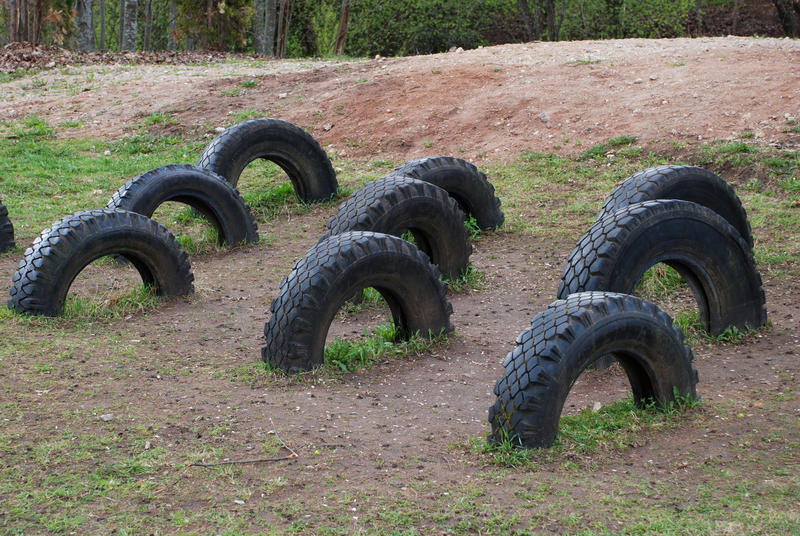Economical Approaches to Getting Rid of Bulky Waste Items
Dealing with bulky waste items--such as old furniture, broken appliances, mattresses, or unused gym equipment--can be a real challenge for homeowners and businesses. Not only do these items take up valuable space, but their removal can also be costly and disruptive when not planned carefully. Thankfully, there are a variety of economical, sustainable, and effective methods for bulky waste disposal that help minimize expenses and environmental impact. This comprehensive guide explores the best strategies for getting rid of unwanted large items, saving money, and doing your part for the planet.

Understanding Bulky Waste: What Items Are We Talking About?
The term bulky waste refers to items that are too large or heavy to be disposed of through standard municipal waste collection. Common examples include:
- Furniture (sofas, beds, wardrobes, tables, chairs)
- Large appliances (refrigerators, washing machines, ovens, freezers)
- Mattresses and box springs
- Rugs and carpets
- Yard and garden furniture
- Old bicycles, fitness equipment, grills, and barbecues
- Construction debris from small renovation projects
Disposing of these large waste items can be tricky due to their size, weight, or hazardous components. But with a bit of planning and know-how, you can get rid of bulky waste efficiently and affordably.
Why Economical Bulky Waste Removal Matters
Many people are surprised at how expensive it can be to dispose of large waste items, especially if they call a professional junk removal service for each piece. However, finding affordable bulky item removal options can offer several benefits:
- Save Money: Lower your out-of-pocket expenses by avoiding high service fees.
- Declutter Efficiently: Free up space in your home, garden, or garage.
- Reduce Environmental Impact: Promote reusing, recycling, and proper disposal over landfill dumping.
- Support Your Community: Donate items that still have life in them or use local networks to reuse goods.
Top Budget-Friendly Methods for Getting Rid of Bulky Waste Items
Let's dive deep into the most cost-effective approaches to removing large unwanted items. Combining several of these strategies can save you both time and money.
1. Take Advantage of Free Municipal Collection Services
Many cities and towns offer bulky waste collection days as part of their waste management services. These special pickups enable residents to leave large waste items at curbside for removal free of charge or for a reduced fee.
- Check your local council or municipality's website for scheduled collection days.
- Find out what items are accepted and if there are any weight or size restrictions.
- Arrange your items according to the guidelines (some communities require prior booking).
Tip: If your city doesn't offer this, look for local bulky waste amnesty events or sponsored neighborhood cleanups.
2. Donate Usable Items to Local Charities or Shelters
One person's trash is another's treasure! If your furniture, appliances, or bulk items for disposal are still in good working order, donating them to a local charity or community organization is a fantastic zero-cost option.
- Reach out to thrift stores, religious organizations, homeless shelters, and furniture banks
- Many charities offer free collection for large donations
- Request a tax receipt if you itemize deductions
Popular Donation-Based Bulky Waste Removal Options Include:
- Goodwill
- Habitat for Humanity ReStores
- The Salvation Army
- Local shelters and support organizations
3. Utilize Online Marketplaces for Free Pickup or Sale
Platforms such as Facebook Marketplace, Craigslist, Freecycle, Nextdoor, or Gumtree are excellent for rehoming unwanted bulky goods at minimal or no cost.
- List items as "free for pickup" for quick removal
- Provide clear photos and honest descriptions
- Arrange for buyers to collect directly from your curb or garage
This not only saves you money but helps promote a circular economy, where goods are reused instead of trashed!
4. Take Items to Local Recycling or Waste Transfer Centers
Most communities have recycling centers, household waste sites, or transfer stations that accept bulky items. This approach can be very affordable--sometimes even free--particularly for residents.
- Check online or call ahead to find your nearest civic amenity site
- Find out what items are accepted and any fees (prices usually much lower than commercial junk removal services)
- Transport goods yourself (enlist friends or hire a small van if necessary)
This DIY approach to bulky item disposal is especially practical for smaller loads or when you have access to a suitable vehicle.
5. Organize a Community Bulk Waste Collection
Pooling resources with your neighbors can drastically reduce the cost of large waste item removal. By coordinating, you can:
- Benefit from group discounts with private haulers
- Share the cost of dumpster rental
- Attract city-sponsored removal services for larger pickup loads
Not only is this a low-cost approach, but it also fosters a sense of community responsibility for waste reduction and sustainable disposal.
6. Hire a Skip or Dumpster for Larger Projects
If you're clearing out multiple rooms, downsizing, or renovating, renting a skip or roll-off dumpster can be cost-effective. Prices often depend on size, rental period, and your location.
- Get quotes from different local providers
- Divide the cost among several households if possible
- Choose the smallest necessary size to minimize expense
Just make sure to clarify what types of bulky items are allowed and adhere to weight limits to avoid extra charges.
7. Break Down and Separate Bulky Items
Disassembling items can sometimes allow you to fit them into your regular trash or recycling bins, avoiding special fees altogether. For example:
- Remove sofa legs and collapsible parts
- Take apart bed frames or wardrobes
- Separate recyclable metals, wood, and plastics
8. Use Professional Junk Removal Services Strategically
If you have no means of transporting items and none of the above options fit your needs, hiring a professional bulky waste collection service may be necessary. To save money:
- Shop around and request multiple quotes
- Schedule during off-peak times for potential discounts
- Combine as many items as possible for a single pickup
- Ask if any items qualify for reduced fees (some providers recycle or donate goods to lower disposal costs)
Tips to Reduce Bulky Waste Removal Costs
Whether you're looking to avoid landfill fees or simply streamline the process, these expert tips can help you dispose of bulky waste for less:
- Plan Ahead: Don't rush! Research all available local options.
- Sort Items: Separate usable, recyclable, and landfill items for proper handling.
- Ask for Help: Enlist friends or neighbors with access to vans or trailers.
- Pair Up: Share removal with neighbors for bulk rates.
- Stay Informed: Check regularly for amnesty days or city promotions for free or discounted disposal.
- Avoid Illegal Dumping: The fines and penalties for dumping bulky waste improperly are much higher than affordable disposal options!
Sustainable Alternatives When Getting Rid of Bulky Items
Beyond cost, responsible bulky waste disposal means making eco-friendly choices so your items don't just become landfill forever. Here's how:
Reuse and Upcycle
- Refurbish old furniture into new pieces--think shelving from doors, benches from beds, or planters from bathtubs!
- Offer parts or usable materials on community forums (DIY-ers and crafters love scrap pieces, metal, and wood)
Recycle Components
- Many household recycling centers accept separated wood, glass, electronics, and metals from bulky waste items
- Some appliance retailers offer trade-in or recycling programs for old white goods
Compost and Green Waste
- Yard furniture and bulky plant debris should go to municipal composting centers or specialized green waste disposals
Donate for Animal Shelters or Theatres
- Animal shelters often need old blankets, mattresses, or large pet-safe furniture
- Theatres may take unusual or vintage big items for set design
Common Mistakes to Avoid When Disposing of Bulky Waste
- Dumping at Illegal Sites: Always use official disposal methods to avoid environmental harm and hefty fines.
- Mixing Hazardous Materials: Remove batteries, fluids, electronics, or dangerous elements from any large item. These require specialized handling.
- Ignoring Assembly Instructions: Sometimes, disassembling items the wrong way can make recycling impossible or unsafe.
- Not Reading Local Guidelines: Each city has unique waste regulations--always double-check!

Frequently Asked Questions: Getting Rid of Bulky Waste on a Budget
-
Q: What is the cheapest way to get rid of old furniture?
A: Try donating, listing for free pickup on community boards, or accessing your city's scheduled bulk item collection. Break items down to fit into regular bins when possible. -
Q: Can I leave my bulky waste out on the curb?
A: Only if your municipality allows it on scheduled collection days. Otherwise, it may be considered illegal dumping. -
Q: Are there environmentally friendly bulky waste removal services?
A: Yes! Many professional services prioritize recycling and donation. Always ask about their disposal policies. -
Q: How much does it cost on average to dispose of a large item?
A: Costs vary--but using municipal picks, donation, DIY recycling, and sharing hauling costs almost always beat professional single-item pickups.
Conclusion: Smart, Economical, and Sustainable Bulky Waste Solutions
In summary, economical approaches to getting rid of bulky waste items combine careful planning, a bit of DIY effort, and leveraging community or municipal resources. Start by considering whether your large unwanted items can be reused or recycled. Explore donation and online marketplace options before considering paid removal. When costs can't be avoided, group efforts or utilizing official collection programs keep fees as low as possible.
With the right strategy, you can not only save money but also reduce environmental impact and support your local community. Next time you need to dispose of bulky waste--whether it's a couch, a fridge, or anything in between--remember these tips for the most affordable, responsible outcome.
Key Takeaways:
- Plan ahead and research all available local services.
- Donate or reuse whenever possible for zero or low-cost bulky waste removal.
- Consider community approaches to maximize savings.
- Use recycling centers or civic amenity sites for environmentally friendly bulky item disposal.
- Never resort to illegal dumping--it's expensive and harmful.
With these budget-friendly solutions, bulky waste removal doesn't have to be a headache or a heavy expense. Make your next decluttering project greener and more affordable than ever!